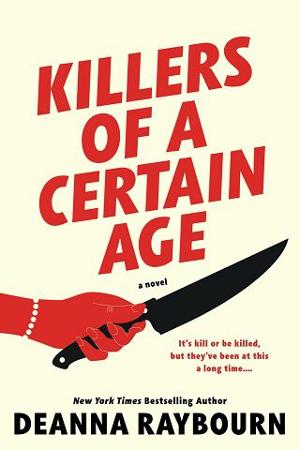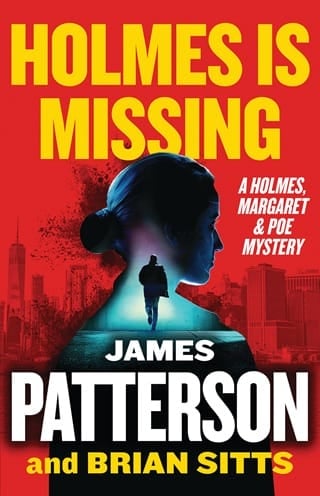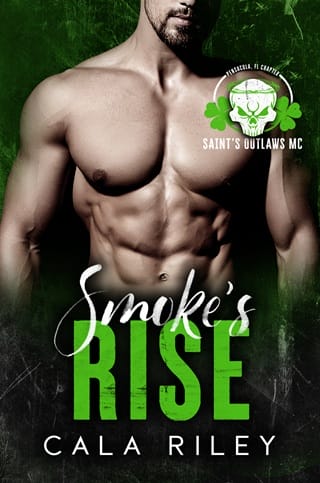Chapter Thirty-Two
CHAPTER THIRTY-TWO
JULY 1981
Wearing their darkest clothes and rubber-soled shoes, they slip out of their tents and into the excavation pit. The entrance to the tunnel has been shored up with lumber, and they ease inside. Thierry Carapaz is carrying a small backpack; the rest have flashlights and a few tools small enough to fit into a pocket. The air in the tunnel is stuffy and damp, and they are all rolling in sweat by the time they reach the cellar. They are moving in silent single file by the light of the miner’s torch Vance Gilchrist has strapped to his head. He turns it off when they emerge into the cellar of the main house and they wait for several minutes, crouching in the cool darkness and letting their eyes adjust. This is the third time they have been in the cellar on reconnaissance. Apart from a stack of empty olive oil cans and a flurry of dead flies, there is nothing in the stone-walled room. The telephone line snakes down one wall, and Mary Alice snips it. The baroness’s villa is cut off now from the outside world.
A short flight of steps ends at the door into the house, and Natalie is dispatched with a set of tools to gently oil the hinges and pick the lock. She works by touch, and when she finishes, she gives a soft whistle. They join her on the steps and wait for Vance to give the signal, another whistle that mimics the birds in the garden. At his mark, they slip, one by one, into the kitchen, where a low night-light is burning. The kitchen is small and grimy, carved out of the dining room by a flimsy partition wall. The stove is tiny, tethered to a tank of gas by a cord, and Carapaz kneels next to it. He silently begins to unpack his tools while Vance and the women separate. Mary Alice is to provide any backup that Carapaz requires, and Helen and Natalie wait for the signal to begin removing the art.
Three months earlier, a Provenance agent posing as a plumber gained access to the house and drew a map from memory—a map they have all memorized. Billie has walked these shadowy rooms a thousand times in her mind, and she counts off the steps as she follows Vance through the dining room and down a low, wide hall to the baroness’s bedroom. Vance pauses, his hand on the knob, waiting until they hear the squeak of bedsprings and a low, rattling breath.
He eases open the door and steps over the threshold. Instantly, the bedside light snaps on. The baroness is awake, holding a revolver in one hand and the telephone in the other.
Vance holds up his hands, smiling. “Good evening.”
He doesn’t reassure her with lies or pretend everything is going to be okay, and Billie respects him for it. The baroness unleashes a litany of German, spitting the consonants as she shouts at the phone, at her caretakers. But no one is coming, and at the last moment, she seems to understand that.
She drops the phone, cupping her free hand under the revolver to steady it. She points it squarely at Vance, and Billie moves into the room. It is standard procedure in such situations, and it is how they have been trained to respond. Two possible places to shoot confuses a target, buying them extra time.
“It’s alright,” Vance says confidently. “If she hasn’t shot yet, she won’t.”
He almost finishes the last word before the baroness fires, clipping his collar. “I’ll be damned,” he mutters, clapping his hand to where the bullet has skimmed his skin, burning it before burying itself in a painting on the wall behind.
Before she can pull the trigger again, Billie puts her hand over the baroness’s. It feels like a collection of bird bones in Billie’s palm, the skin cold and lifeless, the spare flesh winnowed away until only the brittle framework remains.
She looks up at Billie with eyes that are black and bright with hatred. She says something that Billie barely hears, her ears still ringing from the sound of the shot in the small room. In the time it has taken Billie to reach the baroness’s side, she has swept the night table and seen the basket of knitting, balls of wool impaled by a pair of long steel needles.
Billie raises her hand and the baroness feels nothing, only a small punch angling down behind her collarbone. Then Billie removes her fist and the warmth comes, gushing wetly. The subclavian artery, nicknamed “the well” for how much liquid it pumps, is severed cleanly. A young and healthy person will bleed out in as little as two minutes from such an injury, but the baroness is already sinking. Her mouth opens several times but she says nothing else. She does not close her eyes but watches Billie as the life drains out of her, and the last thing she sees is a blond girl smiling in satisfaction at a job well done.
Vance’s hand is clapped to his neck, red seeping between his fingers; his face is a mask of fury and Billie realizes too late what she’s done. It has been more than a decade since the Museum has found a Nazi to execute and it should have been Vance’s kill.
“She was mine,” he says hoarsely.
“She shot you—”
Vance looms over her, putting his face so close to hers she can see her reflection in his pupils, upside down and very, very small.
“She. Was. Mine.”
For an instant Billie thinks he means to hit her, and her fingers tighten on the knitting needle still in her hand. She won’t strike first, but if he touches her, she won’t go down without a fight.
He glances down at the knitting needle and his grin is humorless and cold. “Little girl, if I wanted to punish you for this, you’d be dead before you ever saw me coming. You are not my equal, and don’t you ever make the mistake of thinking you are. I’ve forgotten more about how to kill people than you will ever learn, so finish the job and stay out of my way,” he orders. He points to the painting on the wall. “Get it down. It’s on the manifest.”
She grabs the painting off the wall and hurries out to the dining room, where Natalie is wrapping the last of the paintings. They form a chain, hauling the artworks into the cellar under cover of darkness until the house is stripped. They shift the paintings down the tunnel, barricading the cellar behind them as they go with piles of debris. They stack the art carefully and build another pile of debris to shield it from the excavation side.
Filthy and tired, they move to the stand of banana trees and wait. Carapaz has timed it perfectly, and just as they settle in beneath the wide green leaves, the gas tank explodes. He has left a trail of fuel through the house and it catches quickly, climbing the walls and lighting the roof. There is a muffled whoosh when the fire reaches the baroness’s room. The windows blow out from the heat and the warmth of it touches their faces as they watch.
“Holy shit,” Natalie breathes.
The walls of the house seem to inhale, puffing outwards as smoke billows into the night sky. Billie edges forward, but the roof suddenly collapses in a shower of sparks. The beams crash down with a roar and the night itself erupts.
But the plantation is isolated, the nearest neighbor several miles away, and no one comes. When the fire settles to smoldering ash, they turn to the paintings. Vance Gilchrist has the manifest, and as they identify each of the recovered pieces of art, he marks them off.
“Van Gogh. The Woman in the Wood. Caravaggio. The Gorgon Tisiphone. Bruegel. The Plague Doctor.”
To ship the paintings, they have purchased a set of Gujarati doors, heavily carved but not particularly valuable. Each door comprises a front and back panel, held together with strips nailed around the circumference. Their evenings have been spent carefully removing the nails securing the bottom strips, the section the Customs inspectors are least likely to scrutinize. The same small prybars are used to remove each heavy frame from the paintings and unpick the tacks securing the canvases to their stretchers. Freed, the canvases are slipped inside the opening in the doors. The doors will be crated up and shipped to an import furniture company in Milan that is owned by the Museum. From there, the paintings will be cleaned and remounted and quietly restored to the families from whom they were looted. The Provenance department prides itself on finding the lost owners, searching immigration records and gallery catalogs until they can piece together the rightful claims. Any art they cannot restore to its owners is held in a climate-controlled Swiss warehouse in the hopes they will someday be able to place it.
The last to go in is the painting that has been nicked by the baroness’s bullet.
“Sofonisba Anguissola. The Queen of Sheba Arising,” Vance says. He does not mention the bullet hole in the corner, and neither does Billie, but she watches as the painted face disappears into its hiding place.
It will be almost forty years before she will see it again.
 Fullepub
Fullepub 



